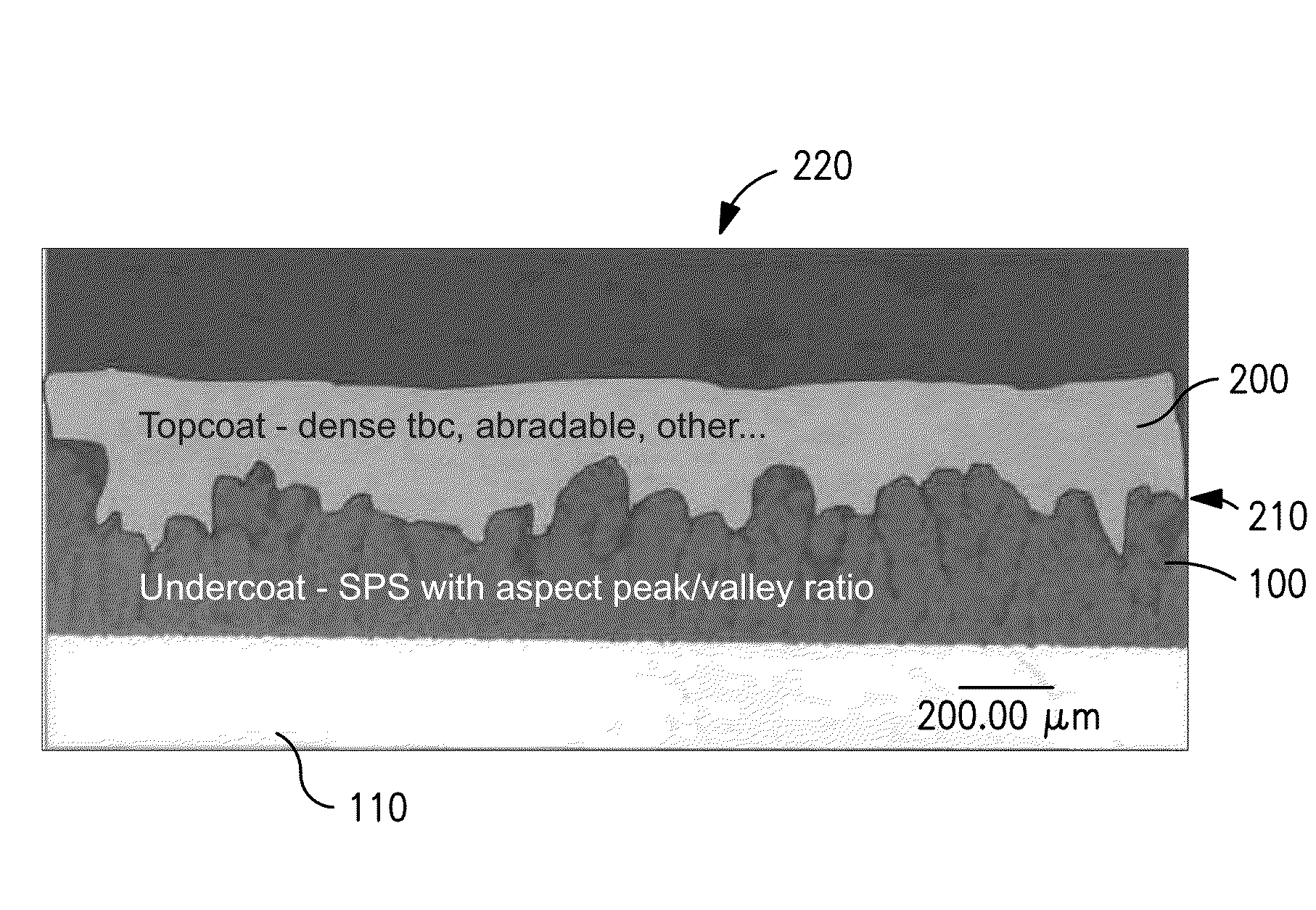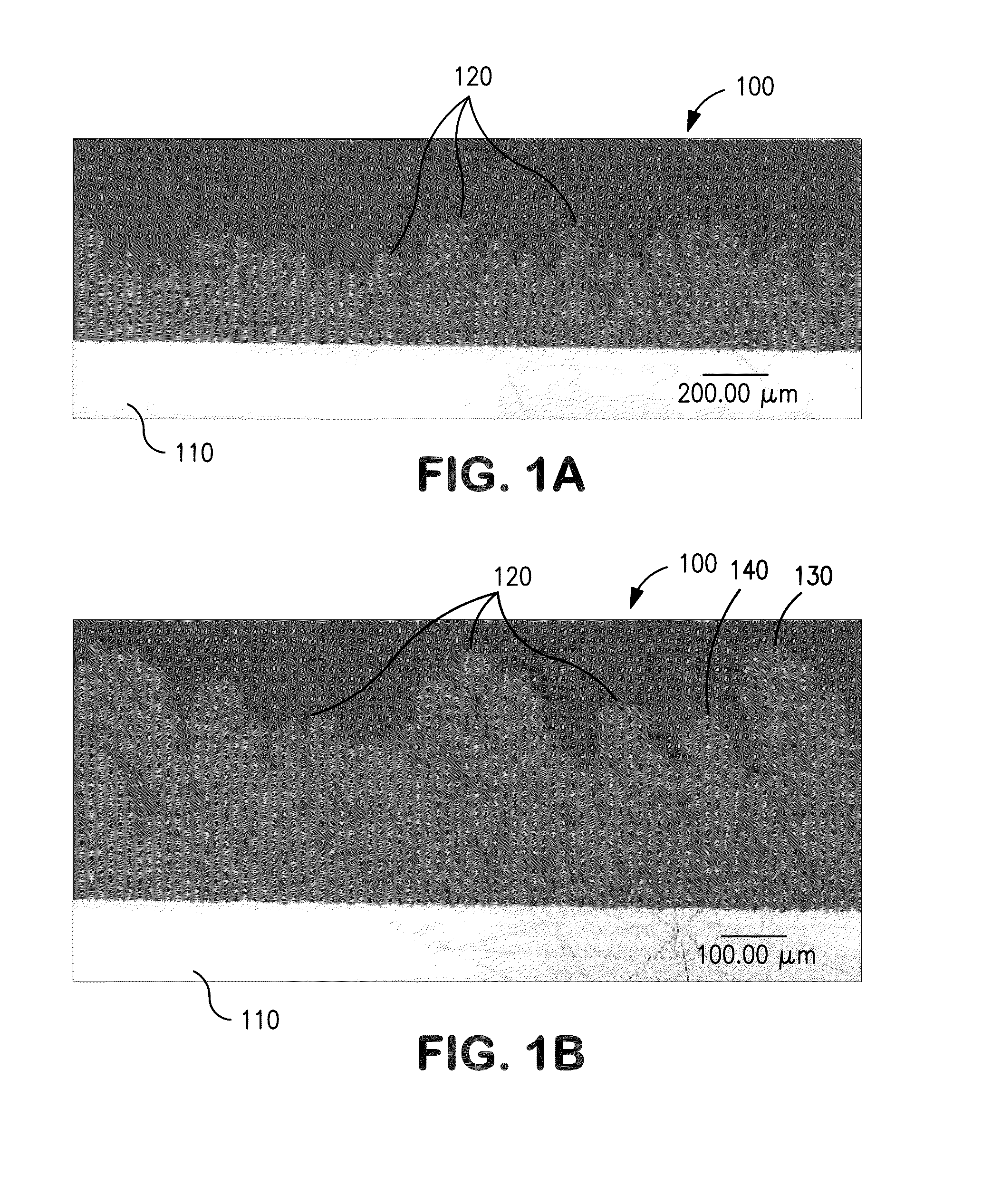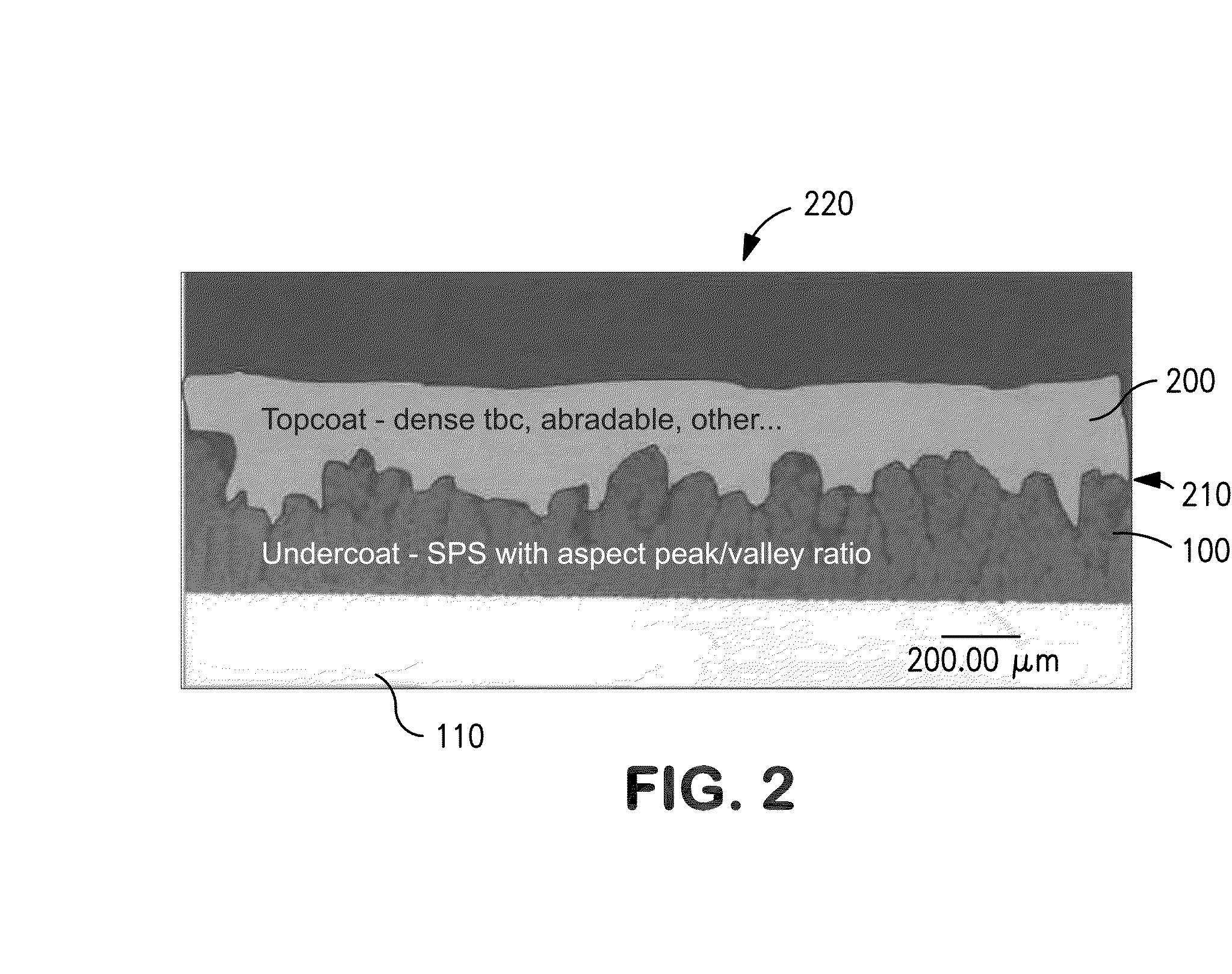Modified thermal barrier composite coatings
a composite coating and thermal barrier technology, applied in the direction of superimposed coating process, instruments, machines/engines, etc., can solve the problems of inter-splat gap, microstructure tend to densify, corrosion of the underlying coating and/or substrate material, etc., to improve mechanical erosion barrier, improve mechanical bonding, and reduce porosity
- Summary
- Abstract
- Description
- Claims
- Application Information
AI Technical Summary
Benefits of technology
Problems solved by technology
Method used
Image
Examples
example 1
[0061]A composite coating system (designated “Columnar SPS Composite A”) was prepared as shown in FIG. 7. The undercoat layer was prepared from feedstock of 7-8 wt % yttria stabilized zirconia (YSZ). The undercoat material had a median particle diameter of about 330 nm. The undercoat material was suspended in an ethanol based suspension and then thermally sprayed onto a smooth substrate having a surface roughness Ra of about 25-40 μin. The coating thickness of the undercoat was 6-7 mil.
[0062]The topcoat layer was prepared from a feedstock material of 7-8 wt % YSZ. The top topcoat material had a median particle diameter of about 2 μm. The topcoat material was suspended in a liquid carrier of an ethanol-based suspension and then thermally sprayed onto the substrate. The coating thickness of the topcoat was 4-5 mil. The thickness of the composite coating was 10-12 mil.
[0063]The resultant composite coating system produced is shown in FIG. 7. The composite contained a ...
example 2
[0067]A composite coating system (designated “Columnar SPS Composite B”) was prepared as shown in FIG. 8. The undercoat layer was prepared from a feedstock of 7-8 wt % yttria stabilized zirconia (YSZ). The undercoat material had a median particle diameter of about 330 nm. The undercoat material was suspended in an ethanol based suspension and then thermally sprayed onto a smooth substrate having a surface roughness Ra of about 25-40 μin. The coating thickness of the undercoat was 6-7 mils.
[0068]The topcoat layer was prepared from a feedstock material of 7-8 wt % YSZ dry powder having an average particle diameter between 22-62 μm. The topcoat material was thermally sprayed by atmospheric plasma spraying (APS) onto a smooth substrate surface to produce an APS Densely Vertically Cracked (DVC) topcoat. The thickness of the APS DVC topcoat was about 8 mil and the total composite coating thickness was about 14-15 mil.
[0069]The resultant composite coating system is shown...
PUM
| Property | Measurement | Unit |
|---|---|---|
| size | aaaaa | aaaaa |
| size | aaaaa | aaaaa |
| size | aaaaa | aaaaa |
Abstract
Description
Claims
Application Information
 Login to View More
Login to View More - R&D
- Intellectual Property
- Life Sciences
- Materials
- Tech Scout
- Unparalleled Data Quality
- Higher Quality Content
- 60% Fewer Hallucinations
Browse by: Latest US Patents, China's latest patents, Technical Efficacy Thesaurus, Application Domain, Technology Topic, Popular Technical Reports.
© 2025 PatSnap. All rights reserved.Legal|Privacy policy|Modern Slavery Act Transparency Statement|Sitemap|About US| Contact US: help@patsnap.com



